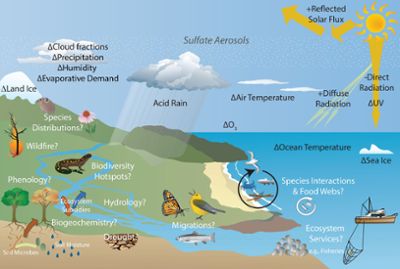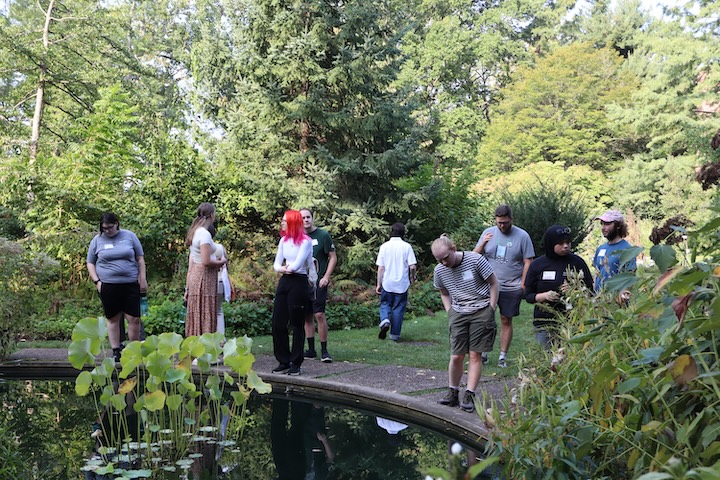To intervene or not to intervene? That is the future climate question
Nine of the hottest years in human history have occurred in the past decade. Without a major shift in this climate trajectory, the future of life on Earth is in question, which poses a new question: should humans, whose fossil fueled society is driving climate change, use technology to put the brakes on global warming?
Michigan State University community ecologist Phoebe Zarnetske is co-lead of the Climate Intervention Biology Working Group, a team of internationally recognized experts in climate science and ecology that is bringing science to bear on the question and consequences of geoengineering a cooler Earth.
The group’s seminal paper, “Potential ecological impacts of climate intervention by reflecting sunlight to cool Earth,” was published in the most recent issue of Proceedings of the National Academy of Sciences of the United States (PNAS).
“There is a dearth of knowledge about the effects of climate intervention on ecology,” said Zarnetske, associate professor in the Department of Integrative Biology and the Ecology, Evolution, and Behavior Program and the paper's lead author. “As scientists, we need to understand and predict the positive and negative effects it could have on the natural world, identify key knowledge gaps, and begin to predict what impacts it may have on terrestrial, marine and freshwater species and ecosystems if it were adopted in the future.”
Conversations in 2018 between Jessica Gurevitch, Distinguished Professor in the Department of Ecology and Evolution at Stony Brook University and working group co-lead, and Alan Robock, Distinguished Professor in the Department of Environmental Sciences at Rutgers University, gave rise to the pioneering group, which is more aware than most that geoengineering Earth’s atmosphere is more than just a science-fiction scenario.

The costs and technology needed to reflect the sun’s heat back into space are currently more attainable than other climate intervention ideas like absorbing carbon dioxide (CO2) from the air. The working group anticipates their lively discussions and open access paper will encourage an explosion of scientific investigation into how a climate intervention strategy known as solar radiation modification (SRM), in tandem with greenhouse gas emissions reduction, would affect the natural world.
The feasibility of planetary-wide SRM efforts hinge on accurate predictions of its myriad outcomes provided by the well-established computer simulations of the Geoengineering Model Intercomparison Project (GeoMIP). The PNAS paper lays the foundation for expanding GeoMIP’s scope to include the incredible range and diversity of Earth’s ecosystems.
“While climate models have become quite advanced in predicting climate outcomes of various geoengineering scenarios, we have very little understanding of what the possible risks of these scenarios might be for species and natural systems,” Gurevitch explained. “Are the risks for extinction, species community change and the need for organisms to migrate to survive under SRM greater than those of climate change, or does SRM reduce the risks caused by climate change?”
“Most of the GeoMIP models only simulate abiotic variables, but what about all of the living things that are affected by climate and rely on energy from the Sun?” added Zarnetske. “We need to better understand the possible impacts of SRM on everything from soil microorganisms to monarch butterfly migrations to marine systems.”
Read more at NatSci.



